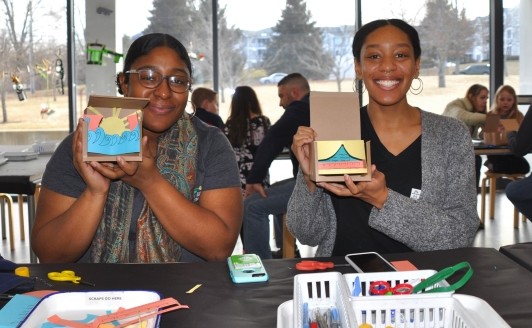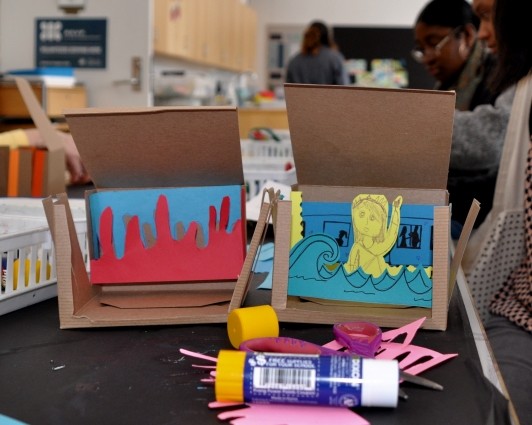
Special Sunday: Tunnel Books
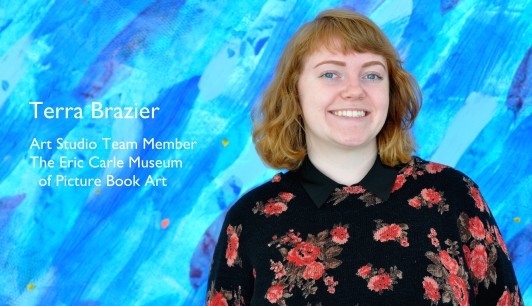
Recently, Art Studio team member Terra Brazier designed a Special Sunday program for museum guests. She planned the event, prepared materials, and facilitated art making in the Art Studio. The following is her description of the project:
This month’s Special Sunday was inspired by our newly opened exhibition, Out of the Box: The Graphic Novel Comes of Age, as we explored how to tell a story through tunnel books. Tunnel books are a form of 3-D paper art that uses layers of paper to create depth in a piece. An excellent example of this is Edward Gorey’s The Tunnel Calamity.
I have been working with tunnel books for the past four years in my personal work, and was curious about how it could be adapted for creators of all different ages. One of the most difficult aspects of constructing a tunnel book is assembling the layers, which is usually done with strips of paper and a lot of doubled sided tape, but we decided to try out boxes.
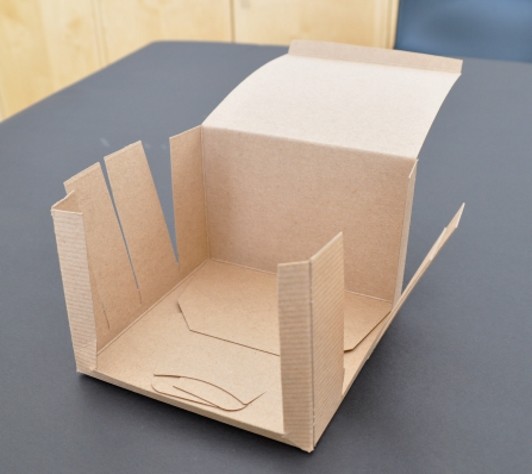
Our boxes were 5x5x3 inches, but any box size can be used. Three thin wedges were cut on two opposite sides of the box, down to about a quarter of an inch above the bottom. A square was also cut out of the front, to be used as a window to view the layers.
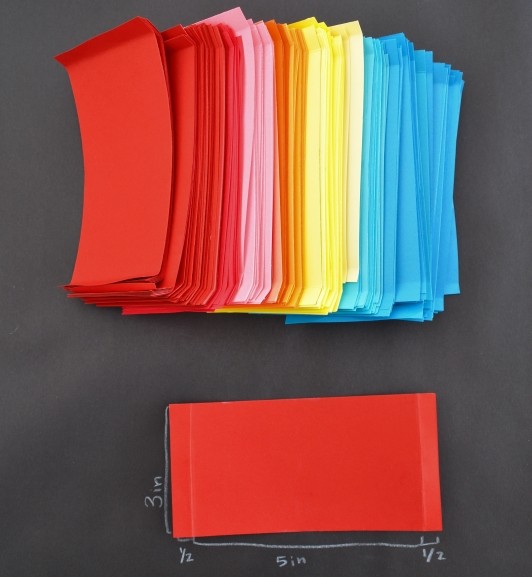
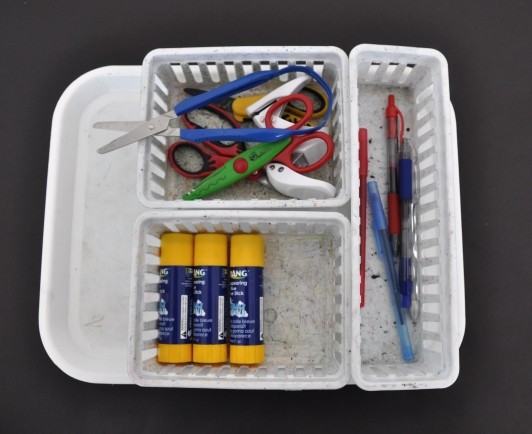
The team cut out 3x6 inch piece of paper of all different colors, with half an inch creased on each end of the long side, so the strips could easily be slide into the wedges of the box. Guests were welcome to choose three pieces of any color paper they’d like, as well as being given a prepared box. At their tables they would find a tray with scissors (both plain and pattern-edged scissors), hole punchers, glue sticks, and pens.
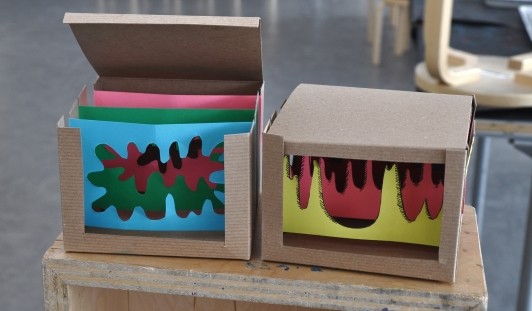
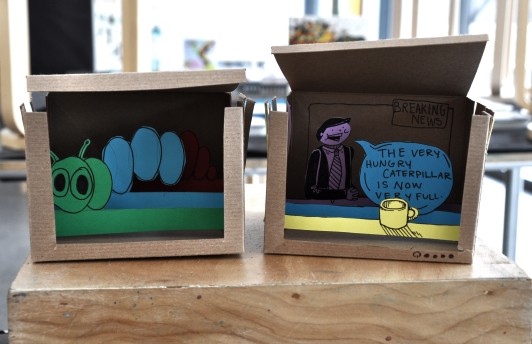
Guests were shown examples of the project that the team had prepared, which varied in style, intricacy and use of materials. They were shown a demo of how to slide the pieces of paper into the wedges, and were informed that the most important thing to remember when creating a tunnel book is to leave at least one strip of each piece of paper intact, so that it could reach across to both sides. It was suggested that the pens could be used to draw out ideas on the pieces of paper or as ways of added detail to their piece, scissors were used to cut the paper, and glue sticks to glue the half inch tabs to the side of the wedges when the piece was complete.
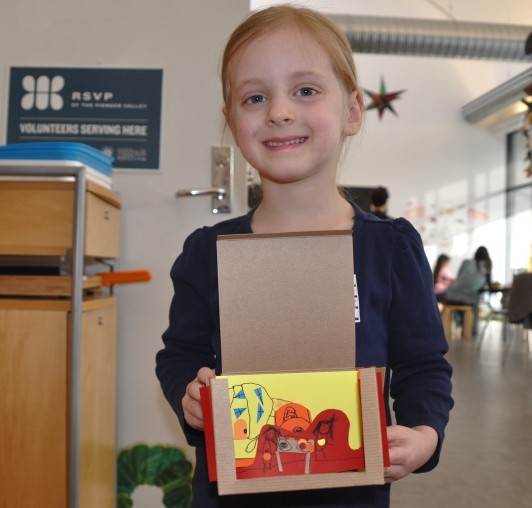
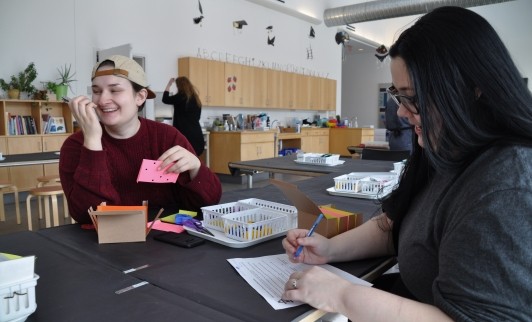
I had expected some confusion for guests while they constructed these pieces, but to my surprise most seemed to understand the project quickly, especially when shown examples. This was a great project for guests of all ages, as it encouraged collaboration between younger ones and adults, as well as inspiring new ways of telling a story.
